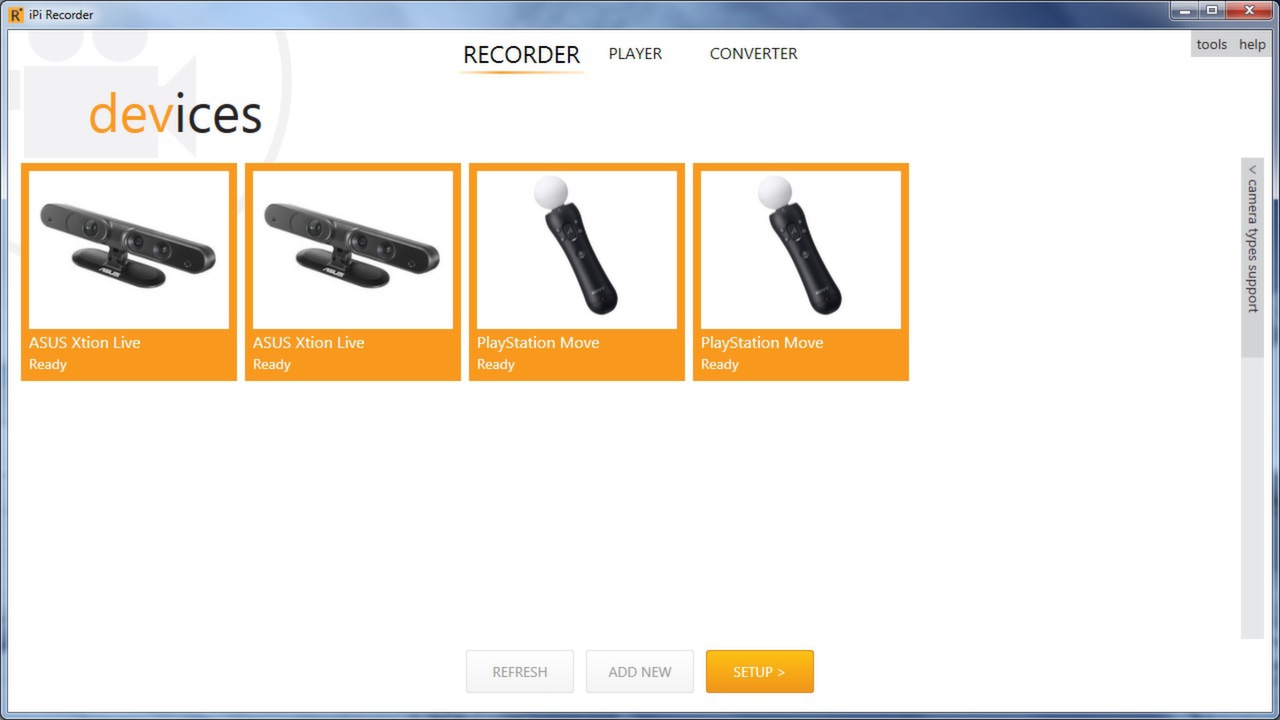

Kinematic data from the Kinect cameras were processed using biomechanics add-on software (iPi Soft, Moscow, Russia). The goals of this study were to examine the validity of a markerless motion capture system using 2 Kinect v2 cameras with custom software during functional movements commonly performed during pre-season physical screening evaluation. 19 20 To our knowledge, until now, no validation of a dual-camera markerless system during dynamic, advanced movements has been done. 18 A multi-Kinect v2 configuration with Microsoft SDK was tested for its validity during gait. 17 More recently, single Kinect v2 was used with Microsoft SDK to test the validity during gait 10 and for balance. Researchers have evaluated the configuration during working activities, 11 functional activities, 12 gait in healthy population, 13 14 gait in multiple-sclerosis, 15 and after cerebrovascular accident, 16 and during a jump test. The majority of studies done so far used Kinect v1, one camera and the Software Development Kit (SDK) provided by Microsoft. 10 However, the validity of this technology in more complex functional movements is currently unclear. Recent advances and improved access to markerless motion capture technology have made the use of low-cost motion analysis tools a possibility in the clinical setting. Additionally, these somewhat artificial laboratory conditions can cause unknown experimental artefacts. Accordingly, these approaches are rarely employed in settings where time and/or financial constraints exist such as preseason screening of athletes performing functional movement. These approaches, however, require expensive equipment, significant operator training and analysis time as well as increased subject set-up time. Marker-based motion capture is currently considered the reference method for kinematic analyses. 7 Additionally, a modification of the CMJ with the athlete landing on one leg instead of two (Modified Counter Movement Jump (MCMJ)) has been recommended as being more sport-specific. In the context of football (soccer), commonly performed functional tests include: Single Leg Squat (SLS) assessing motion in frontal plane knee motion 2–4 Single Leg Jump (SLJ) 5 6 and Counter-movement Jump (CMJ) for lower limb power estimation. Such approaches have shown limited accuracy in estimating injury likelihood, and it has been suggested that this could be attributed, in part, to the reduced objectivity of these approaches in comparison to 3-dimensional kinematic analyses. The quantification of these movement assessment tests is typically performed with simple visual analysis and rating, 1 or occasionally using video recording and later 2-dimensional analysis. Depending on the particular sport’s performance requirements and injury patterns, different test batteries are employed in an effort to identify at-risk individuals to target for tailored interventions. Precompetition medical assessment of athletes commonly includes assessment of movement quality while athletes perform standardised testing procedures.


 0 kommentar(er)
0 kommentar(er)
